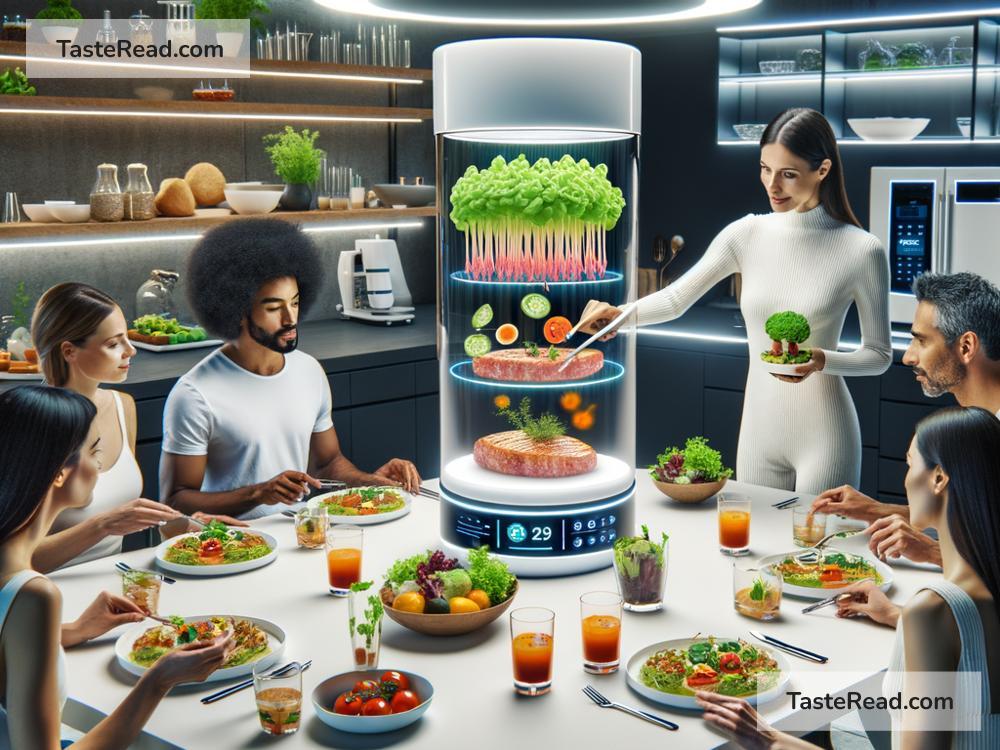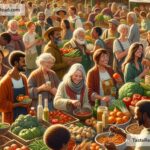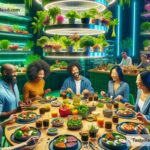The Future of Food and Cultural Transformation: A Glimpse Ahead
Food is not just something we eat to survive; it’s an important part of who we are and what makes our cultures unique. Across the world, meals have always been about sharing, connecting, and celebrating traditions. But as we look toward the future, food is changing—how it’s made, how it’s eaten, and even what it means to our cultures. The transformation is powered by new technologies, environmental challenges, and evolving values. Let’s explore how the future of food could shape the way we live and connect with each other.
New Ways to Grow Food
One of the most exciting changes we’re seeing in the food world is innovation in farming and food production. Scientists and farmers are finding smart solutions to meet the growing demand for food while reducing harm to the planet. Here are some key examples:
-
Vertical Farming: Imagine stacks of green plants growing indoors under LED lights, in tall towers or even old warehouses. Vertical farms use less land and water than traditional farming and can grow food right in cities, closer to where people live.
-
Lab-Grown Meat: In the future, your burger might not depend on raising cows. Scientists can now grow animal cells in labs to produce “meat” without the need for farms or slaughterhouses. This innovation could help reduce environmental damage caused by traditional meat production.
-
Climate-Resistant Crops: Farmers and researchers are creating crops that can survive droughts, floods, and extreme temperatures. This is crucial as climate change makes farming harder in many parts of the world.
-
Alternative Proteins: Insects, like crickets, and plant-based substitutes are becoming popular choices for protein. These are healthier, more sustainable, and require fewer resources to grow compared to livestock.
The Role of Technology in Eating Habits
Technology is making its way into kitchens and dining rooms. Smart tools are reshaping the way people interact with food. Here are some possibilities for the future:
-
Personalized Diets: Devices and apps can analyze your health, genetic makeup, and lifestyle to recommend meals that are tailor-made for your body. This can help people eat healthier and prevent diseases.
-
Smart Kitchens: From ovens that cook food automatically to AI-powered recipe apps that suggest what to make based on what’s in your fridge, technology will make cooking easier and more efficient.
-
Delivery Drones and Robots: Online food delivery is already huge, but in the near future, your dinner could arrive at your doorstep via drone or robot. This innovation makes food delivery faster and more accessible.
-
3D-Printed Food: Imagine “printing” a pizza or a cake by loading edible ingredients into a machine. 3D food printers let chefs experiment with shapes, textures, and flavors that weren’t possible before.
Changing Food Cultures
As food evolves, so do the traditions, rituals, and connections built around it. But will these changes bring people closer, or pull them apart?
One trend is the rise of global influences. Today, you can find sushi in Mexico or Indian curries in France. This blending of food cultures brings variety and can help people appreciate each other’s traditions. However, local dishes may risk being overshadowed by international trends.
At the same time, diets are becoming more diverse, with many people adopting vegetarian, vegan, or gluten-free lifestyles. This shift isn’t just about health—it’s often driven by environmental concerns and compassion for animals. As these lifestyles grow, cultures may adapt their traditions and recipes to accommodate new values.
Technology is also changing how we share food. In the past, meals were often eaten in groups—around family tables or at big celebrations. Now, with busy schedules and the rise of food delivery apps, people are increasingly eating alone, often in front of a screen. The challenge for the future might be finding ways to maintain the social and emotional connection that comes from shared meals.
Lastly, food has always carried stories. Whether it’s grandma’s secret recipe or a festival feast, dishes tell tales of history, migration, and resilience. In the future, as new ingredients and technologies emerge, how will these stories evolve? The answer depends on how we hold onto our traditions while embracing change.
Sustainability and Values
One of the biggest pressures shaping the future of food is sustainability. Agriculture today is responsible for huge amounts of greenhouse gases, deforestation, and water use. But alternatives like lab-grown meat, vertical farms, and plant-based proteins offer hope for creating food systems that are gentler on the planet.
At the same time, people are rethinking food waste. In many cultures, throwing away food is seen as disrespectful. Today, apps and programs help reduce waste by connecting extra food to people in need, or showing users how to make delicious meals from leftovers.
In the future, food may not only be about flavor and nutrition—it will reflect deeper values about caring for the planet, treating animals ethically, and supporting communities.
Looking Ahead
The future of food is full of possibility. Science and technology are making food systems smarter and more sustainable. At the same time, cultural transformation will challenge how we think about meals and traditions. While change can be exciting, it’s also important to preserve what makes food meaningful—the connections it creates between people, the stories it carries, and the joy of sharing flavors and experiences.
As these worlds collide, the question is: How can we adapt to these innovations while holding onto the heart of food? The answer will shape not only our diets, but the soul of our cultures and communities for generations to come.


